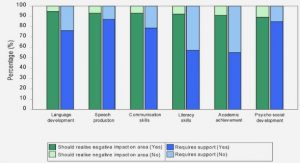Get Complete Project Material File(s) Now! »
Theoretical background
Overview
This section enables the readers to acquire an in-depth theoretical knowledge on the topics that are related to research. Further this chapter is sub classified into four sections where the first section gives a brief idea on purpose of considering data aggregation in WSN.The second section discusses about data aggregation in WSN and further explains how the process of data aggregation carries out in WSN. Third section explains comparison of WSN with and without data aggregation and fourth section clearly illustrates data gathering transmission. Finally it summarizes the chapter.
Purpose of Data Aggregation in WSN
In current scenariosthe demand for WSN had rapidly increased in various applications like weather monitoring, petroleum and military due to low power, small size, light weight, and wireless sensors. However these inexpensive sensors are equippedwith limited battery power and thus constrained in energy [10]. One of the major issueswith WSN is that one need to increase the lifetime of network. Generally,lifetime of network is defined as the time whenever the first node fails to send its information to base station. This issue can be resolved by implementing data aggregation technique as it decreases data traffic and further saves energy by merging multiple incoming packets into a single packetwhenever the sensed information are highly correlated [66].Numerous researches have been carried out to further extent
network lifetime.
Data Aggregation in Wireless Sensor
Networks It is just a process of aggregating the sensor information through aggregation approaches. This technique was mainly utilized to resolve both overlap and implosion problem in data centric routing [22]. In data aggregation the sensor network is generally supposed as reverse multicast tree. Here, sink request the sensor nodes to report ambient condition of phenomena. In this process, generally the information that is coming from several sensor nodes are aggregated in such a way that they are about same attribute of phenomenon once it reach the same routing node on way back to sink.
Data Aggregation Techniques
Generally the data aggregation can be classified on basis of network topology, quality of services, network basis and many more. For the current research, the techniques are being discussed based on the network topology. In this topology, the data aggregation technique is categorized into two parts which are flat and hierarchical network.Further hierarchical network is sub-classified into four parts which are cluster based,chain based, tree based and grid based.
Data Aggregation and Gathering Transmission in Wireless Sensor Networks: A Survey
1. Introduction
1.1 BACKGROUND OF TECHNOLOGY
1.2 OVERVIEW OF WIRELESS SENSOR NETWORKS
1.3 IMPORTANCE OF WSN
1.4 INDUSTRIAL WIRELESS SENSOR NETWORK STANDARDS
1.4.1 Wireless-HART
1.4.2 ISA-100.11a
1.4.3 WIA- PA
1.5 WSN DRAWBACKS
1.6 THESIS OUTLINE
2. Theoretical background
2.1. OVERVIEW
2.2. PURPOSE OF DATA AGGREGATION IN WSN
2.3. DATA AGGREGATION IN WIRELESS SENSOR NETWORKS
2.4. DATA AGGREGATION TECHNIQUES
2.4.1. Data Aggregation in Flat Networks
2.5. DATA AGGREGATION IN HIERARCHICAL NETWORKS
2.5.1. Cluster based Data Aggregations Technique
2.5.2. Chain based Data Aggregations Techniques
2.5.3. Tree based Data Aggregations Technique
2.5.4. Grid based Data Aggregations Technique
2.6. IMPACT OF TIMING IN DATA AGGREGATION
2.7. DATA AGGREGATION WITH TIME SYNCHRONIZATION
2.8. COMPARISON OF WSN WITH AND WITHOUT DATA AGGREGATION
2.9. SUMMARY
3. Survey1: In-network Data Aggregation
3.1. OVERVIEW
3.2. SURVEY AND DISCUSSION ON WSN
3.3 CLUSTER BASED DATA AGGREGATION TECHNIQUE
3.3.1. LEACH
3.3.2. CAG
3.3.3. EECDA
3.3.4. Comparison of LEACH, CAG, and EECDA Protocols
3.4. CHAIN BASED DATA AGGREGATION TECHNIQUE
3.4.1. PEGASIS
3.4.2. COSEN
3.4.3. Enhanced PEGASIS
3.4.4. CHIRON
3.4.5. Comparison of PEGASIS, COSEN, Enhanced PEGASIS and CHIRON Protocols
3.5. TREE BASED DATA AGGREGATION TECHNIQUE
3.5.1. TREEPSI
3.5.2. PERLA
3.5.3. TCDGP
3.5.4. Comparison of TREEPSI, PERLA and TCDGP Protocols
3.6. GRID BASED DATA AGGREGATION TECHNIQUE
3.6.1. GROUP
3.6.2. ATCBG
3.6.3. Comparison of GROUP and ATCBG Protocols
4. Survey 2: Secure Data Aggregation
Type of Attacks and need for Study on Secure Data Aggregation
4.1 FUZZY BASED SECURE DATA AGGREGATION TECHNIQUE IN WIRELESS SENSOR NETWORKS
4.2 FALSE DATA DETECTION IN WIRELESS SENSOR NETWORK WITH SECURE COMMUNICATION
4.3 SECURE HOP-BY-HOP DATA AGGREGATION APPROACH PROTOCOL (SDAP)
4.4 SECURE INFORMATION AGGREGATION (SIA)
4.5 WITNESS-BASED DATA AGGREGATION (WDA)
4.6 SECURE AGGREGATION TREE (SAT)
4.7 ENERGY-EFFICIENT SECURE PATTERN-BASED DATA AGGREGATION (ESPDA)
4.8 SECURE REFERENCE-BASED DATA AGGREGATION (SRDA)
4.9 ENCRYPTION
4.10 CONCEALED DATA AGGREGATION (CDA)
4.11 SECURE HIERARCHICAL IN-NETWORK DATA AGGREGATION (SHDA)
4.12 PRIVACY-PRESERVING DATA AGGREGATION (PDA) IN WIRELESS SENSOR NETWORKS
4.13 DYNAMIC AND SCALABLE ROUTING TO PERFORM EFFICIENT DATA AGGREGATION IN WSN
4.14 AN EFFICIENT DATA AGGREGATION SCHEME USING DEGREE OF DEPENDENCE ON CLUSTERS IN
WSNS
5. Conclusion and Future Work
5.1 CHALLENGES IN DATA AGGREGATION
5.2 FUTURE WORK
5.3 CONCLUSION
6. References






